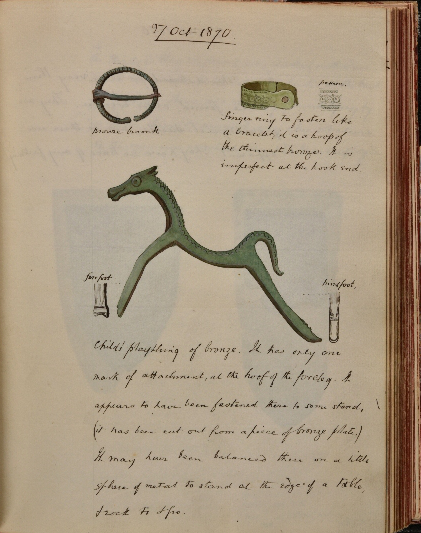Rev. James G. Joyce's Journals of the Excavations at Silchester
1864 to 1877

Page from Joyce's diary (17 October 1870) showing his watercolour of the Silchester bronze horse
The Revd James G. Joyce excavated the site of the Roman town of Calleva, now the village of Silchester in Hampshire, from 1864 to 1878 and discovered the Silchester Eagle. The Roman town formed part of the Stratfield Saye estate owned by the Duke of Wellington. It was the second Duke who invited Joyce, who was rector of Stratfield Saye, to undertake the archaeological investigations. Later the Society of Antiquaries' excavations uncovered the whole area within the town walls between 1890 and 1909.
The Revd Joyce meticulously recorded his work in his illustrated three-volume diary. His appreciation of stratification and his interest in Darwin’s work on earthworms foreshadow modern scientific techniques. Darwin’s sons visited the site to conduct scientific studies and Darwin’s The Earthworm contained some woodcuts from Joyce’s section-drawings.
Joyce's journals arrived at the Museum by a roundabout route. They were bought at Winchester as an unclassified lot in an auction of the effects of the late A.G. Joyce, his son, and purchased from the buyer by Mr. Smith of William Smith, a bookseller in London Street, Reading, who subsequently sold them to the Museum together with a silver spoon handle from Joyce's excavations. The volumes were rebound in the late 1970s or 1980s.
Museum object number